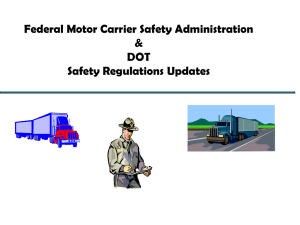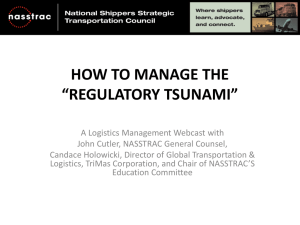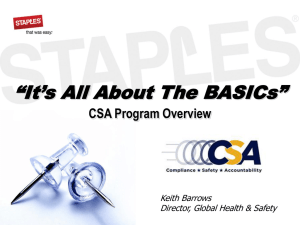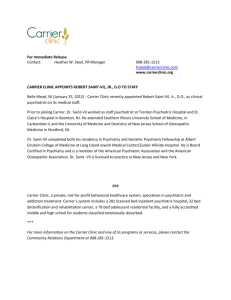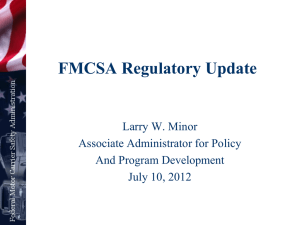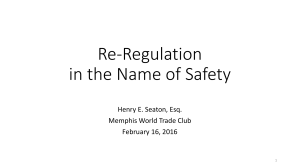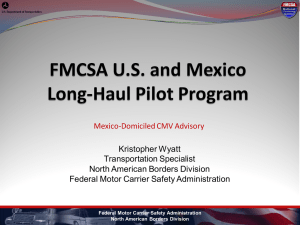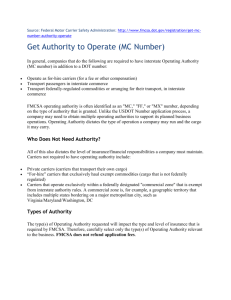CSA
advertisement
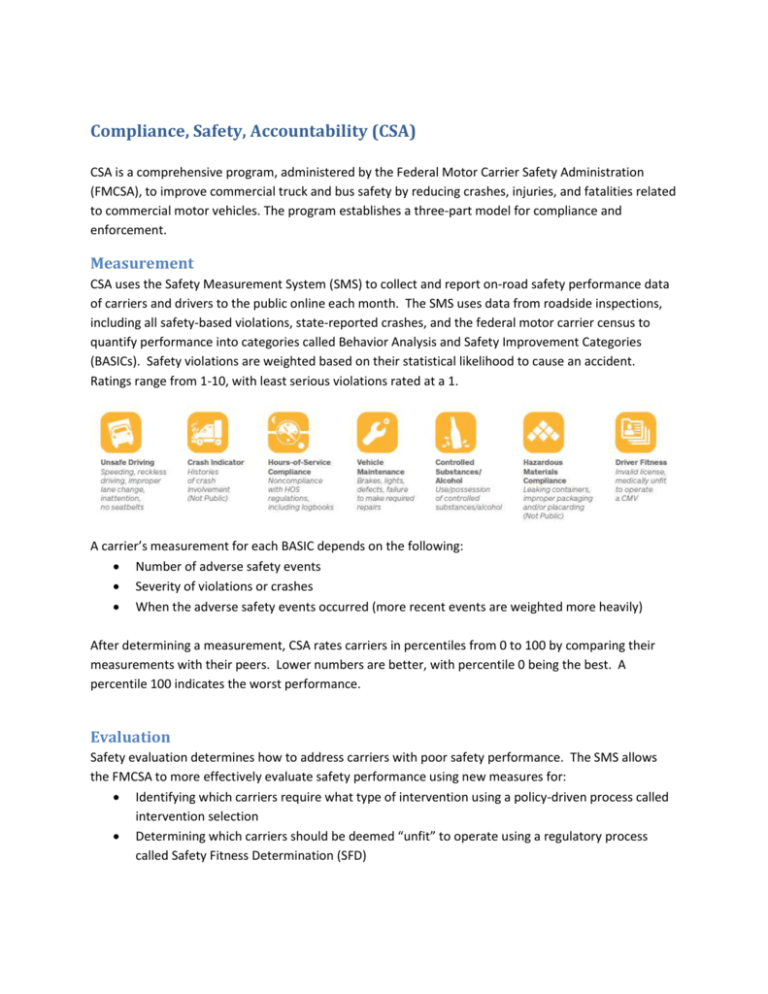
Compliance, Safety, Accountability (CSA) CSA is a comprehensive program, administered by the Federal Motor Carrier Safety Administration (FMCSA), to improve commercial truck and bus safety by reducing crashes, injuries, and fatalities related to commercial motor vehicles. The program establishes a three-part model for compliance and enforcement. Measurement CSA uses the Safety Measurement System (SMS) to collect and report on-road safety performance data of carriers and drivers to the public online each month. The SMS uses data from roadside inspections, including all safety-based violations, state-reported crashes, and the federal motor carrier census to quantify performance into categories called Behavior Analysis and Safety Improvement Categories (BASICs). Safety violations are weighted based on their statistical likelihood to cause an accident. Ratings range from 1-10, with least serious violations rated at a 1. A carrier’s measurement for each BASIC depends on the following: Number of adverse safety events Severity of violations or crashes When the adverse safety events occurred (more recent events are weighted more heavily) After determining a measurement, CSA rates carriers in percentiles from 0 to 100 by comparing their measurements with their peers. Lower numbers are better, with percentile 0 being the best. A percentile 100 indicates the worst performance. Evaluation Safety evaluation determines how to address carriers with poor safety performance. The SMS allows the FMCSA to more effectively evaluate safety performance using new measures for: Identifying which carriers require what type of intervention using a policy-driven process called intervention selection Determining which carriers should be deemed “unfit” to operate using a regulatory process called Safety Fitness Determination (SFD) SFD expands the use of on-road performance by including results of all investigations. It allows FMCSA to determine safety fitness on a larger segment of the industry. Intervention Early Contact Warning Letter Carrier Access to Safety Data & Measurement Targeted Roadside Inspection Sent to a carrier’s place of business that specifically identifies an alerted BASIC and outlines possible consequences of continued safety problems Carriers have access to BASICs scores as well as past inspection reports and violations that went into those results. Carriers can chart a course of self-improvement and monitor data for accuracy Inspectors are provided with data that identifies a carrier’s specific safety problems, by BASIC. Inspections occur at locations where connectivity to the SMS information is available Investigation Offsite Investigation Onsite Focused Investigation Onsite Comprehensive Investigation Carrier is required to submit documents that are to be used to evaluate the safety problems identified through the SMS and determine root causes Investigation may be selected when alerts in one or two BASICs exist and target specific problem areas Used when carrier exhibits broad and complex safety problems through continually alerted BASICs, worsening multiple BASICs (3+), or a fatal crash or complaint Follow-on Cooperative Safety Plan (CSP) Notice of Violation (NOV) Notice of Claim (NOC) Operations Out-ofService Order (OOS) Implemented by carrier and is voluntary. Carrier and FMCSA collaborate to create a plan to address the underlying problems Formal notice of safety alerts that requires a response from the carrier. Used when regulatory violations discovered are severe enough to warrant formal action but not a fine. Also used when violation is immediately correctable and level of cooperation is high Issued where regulatory violations are severe enough to warrant assessment and issuance of civil penalties Order requiring the carrier to cease all motor vehicle operations CSA Operations Model The model features continuous monitoring and tracking of entities’ safety performance. Resources https://csa.fmcsa.dot.gov/about/ http://www.whatiscsa.com/overview/ https://csa.fmcsa.dot.gov/YourRole/FMCSA.aspx

